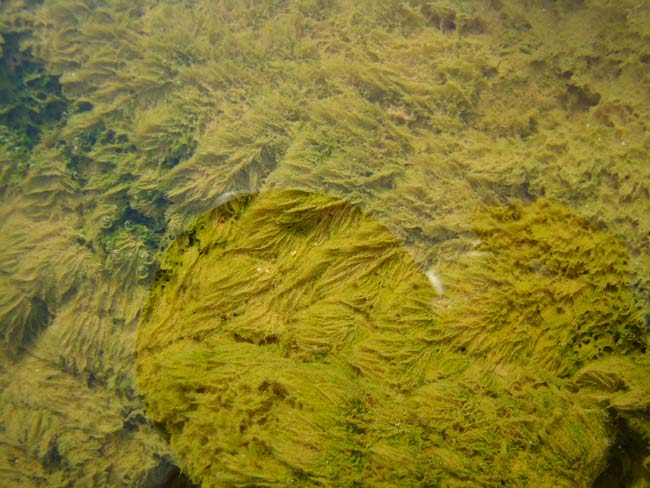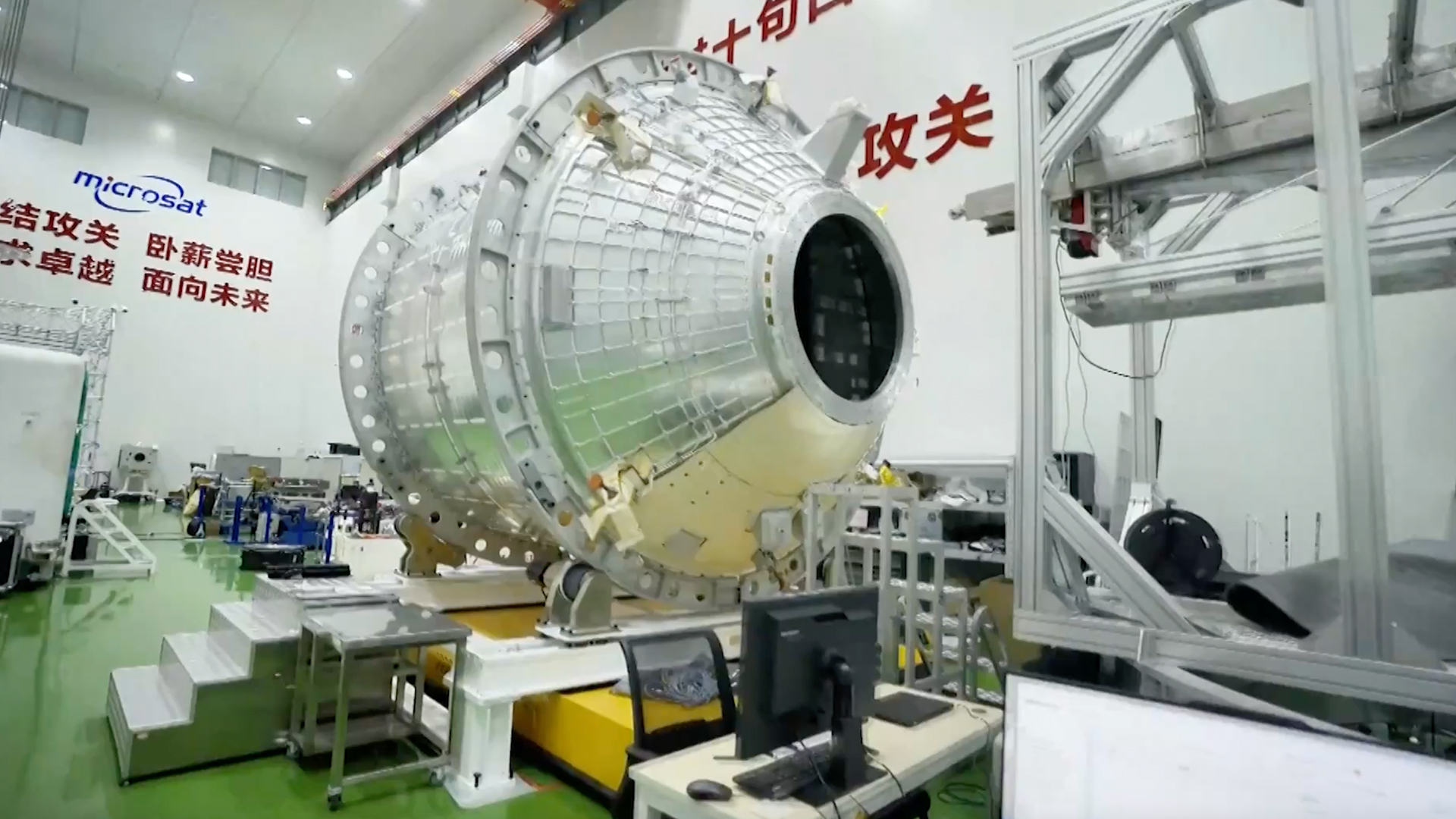What Mars Fossils Might Look Like

Fossil microbes found along aniron-rich river in Spain reveal how signs of life could be preserved inminerals found on Mars. The discovery may help to equip the next generationMars rover with the tools it would need to find evidence of past life on theplanet.
The RioTinto arises from springs west of Seville. These springs percolate upthrough iron ores that were deposited by geothermal activity more than 200million years ago. Spring water dissolves iron sulfide minerals from the ores,and this stains the river red. The iron sulfide minerals also dissociate toform sulfuric acid.
With a pH between 1.5 and 3, RioTinto is as sour as vinegar, yet it supports a surprising variety of life.Bacteria, algae, single-celled organisms called protists and fungi all thrivein the acid headwaters.
Rio Tinto has attracted theattention of exobiologists because this environment can create the iron mineralhematite, which has been found on Mars. On Earth, hematite only forms withliquid water. Since liquid water is seen as a prerequisite for life elsewhere,the mineral's presenceon Mars tantalizes those who hope to find signs of life, past or present,on our neighboring planet.
By examining incipient fossilsalong Rio Tinto's shores and comparing them with much older fossils left onterraces now high above the river, David Fern?ndez-Remolar of the Astrobiology Center in Torrej?n de Ardoz, Spain and Andrew Knoll of Harvard University hope to better understand how similar minerals may have preserved a record of lifeon Mars.
Washed up
Pools at the edge of the riverevaporate in the heat of the Spanish summer and leave behind mineral deposits. Overthe years, as the river cuts down into the valley it creates rock terraces. Theoldest and highest terraces formed 2 million years ago while the youngest arejust a few centimeters above the surface.
Breaking space news, the latest updates on rocket launches, skywatching events and more!
When Fern?ndez-Remolar and Knolllooked at those evaporating pools, they saw microbes that had become coatedwith nanoparticles of iron minerals that had precipitated out of the water. Themost common mineral they observed was a rust-like iron oxide called goethite.Layers of fine-grained goethite surrounded the youngest fossil microbes,preserving the rod-like shapes of individual bacteria as well as filamentsformed by bacterial colonies.
The minerals surrounding the fossilschanged as the sediments cemented to form rock. Finely grained minerals encasedfossils found in the youngest terrace, but those from a rock layer 700 to 800years old had larger crystals. Over time, the minerals altered chemically aswell. Rustlike goethite slowly loses hydrogen and oxygen atoms to become morestable hematite over time. In fossils from the oldest terraces, hematite hadbegun to replace the goethite. These findings were recently reported in thejournal Icarus.
The iron-rich rocks of Mars'sMeridiani Planum, where the rover Opportunity explores, may have formed throughroughly similar geochemical processes, says planetary geologist Timothy Glotchof the State University of New York in Stony Brook.
"Rio Tinto is a decentanalog for what we see on Mars," Glotch said, noting that spectralanalyses suggest Martian hematite originally formed as goethite or a similarmineral that was later altered to hematite. "It's a story similar to whatthey see in Rio Tinto."
Visit required?
The Martian hematite rocks arefar older than the Rio Tinto rocks. They may date back to as much as 3 to 4billion years ago, a time that coincides with the earliest evolution of life onEarth. A lack of tectonic activity on Mars is likely to have left them relativelyuntransformed. For that reason, "Mars would be a very good place to lookfor preservation of microbial structures," Fern?ndez-Remolar says.
Planetary scientist CarolStoker of NASA's Ames Research Center at Moffett Field, California, agreesthat if life was abundant when the Meridiani sediments formed, the fossilswould likely be similarly preserved. But she isn't holding out much hope for anyrover to find fossils. Successful identification of fossil life requirescareful field work by geologists who select many of the most promising samplesto analyze, she says.
Fern?ndez-Remolar and Knollthinly sliced the Rio Tinto rocks to see the microbial structures. Althoughfuture rovers could be equipped with more powerful micro-imagers, they stillwouldn't be able to peer inside the rocks. The next generation rover isexpected to pulverize samples and to analyze the dust, a process that wouldobliterate the shape of anything that happened to be preserved.
Even missions designed to bringsamples of Martian rocks back to Earth are unlikely to be able to select andship back enough rocks to make detection of fossils probable, says Stoker. "Themissions most likely to find definitive evidence of fossil life on Mars will bethose conducted by human crews," she claims.
- Gallery: A Tour of Mars
- What Iron Can Tell Us About Mars
- From a River in Spain to a Crater on Mars
